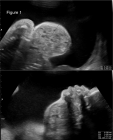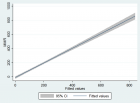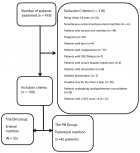Current Issue (Volume - 8 | Issue - 1)
Impact of Balanced Lifestyles on Childhood Development: A Study at Crèche
Published on: 9th January, 2024
Introduction: In our fast-paced world, children’s dietary habits and behaviour are increasingly concerning, with a tendency toward indulging in sweets and snacks. Insights are derived from observations of 20 children at a crèche facility.Temptation o... f sweets: Children’s inherent attraction to sweet and salty snacks challenges maintaining a healthy diet. Excessive consumption can lead to health issues, recognizing the pivotal role parents and caregivers play in guiding children toward healthier choices.Significance of a balanced diet: A well-rounded and nutritious diet is crucial for a child’s physical and mental development. Providing fruits, vegetables, whole grains, and lean proteins is essential.Role of activities: Diversifying a child’s routine with engaging activities is a powerful strategy to redirect their focus from unhealthy snacks. Sports, arts, outdoor play, and educational games promote physical fitness, creativity, and cognitive development, contributing to a well-balanced lifestyle.Strategies for encouraging healthy choices:• Lead by example: Modelling healthy habits inspires children to adopt similar behaviour.• Educate about nutrition: Imparting knowledge about the nutritional value of foods equips children to make informed choices.• Make healthy options accessible: Stocking the kitchen with nutritious snacks makes it convenient for children to opt for healthier alternatives.• Limit unhealthy choices: Setting clear limits on sugary snacks helps children develop moderation and self-control.• Create a fun and active environment: Fostering an enjoyable environment involves family outings, games, and making exercise a natural part of daily life.Results: Encouraging results were observed among the 20 children. Two children, aged around 12, demonstrated awareness of healthy habits. Excluding these two, others showed positive changes in behaviour towards sweets and snacks through activities and counselling.Conclusion: Maintaining a balance between a child’s consumption of sweets and snacks and engaging in diverse activities is crucial for overall development. A combination of nutritious choices and engaging activities guides children toward a path of health and happiness Show more >
Evaluation of the Social Return on Investment (SROI) in Patients with Hepatitis C. The Case of the Mobile Outreach Program (MOP)
Published on: 9th September, 2024
The World Drug Report highlights that the prevalence of hepatitis C virus (HCV) is one of the leading causes of cirrhosis and hepatocellular carcinoma globally. This report estimates that HCV is responsible for the annual death of around 700,000 peop... le due to liver disease and is associated with high levels of morbidity and mortality with high health and socio-economic costs. This exploratory study aims to evaluate the socio-economic return provided by HCV treatment of individuals integrated into the MOP developed by the NGO Ares do Pinhal in Portugal. Using the SROI (Social Return on Investment) methodology is estimated that for every euro invested in this program, the return for society is 3,75€. This is a significantly positive SROI value, highlighting the importance of this investment in the creation of monetized value for society, as well as to provide greater well-being to those who need it and to society as a whole. Show more >
Drug Abuse and Mental Illness in Erigavo Mental Hostiptal, Erigavo, Somalia
Published on: 10th September, 2024
Mental illness is an international health crisis that puts the lives of over three hundred million people (Four percent of the world’s population) at risk. The study was conducted at the Erigavo Mental Hospital in Somaliland and its main focus was th... e bond between substance abuse and mental illness. The research was to check the influence of the different drugs, screen mental health problems, and draw a link between drugs and mental illness. The sources of the quantitative data were a total of 27 employees and managers. This study is cross-sectional. We employed the measure of the magnitude and direction of a linear relationship between two variables with the Pearson correlation coefficient. The outcomes that were acquired show that there was use and particularly abuse of khat, substance smoking, and alcohol consumption, the score means of which were quite high. The investigation results, however, imply that through drug use and other forms of alcohol drug abuse, one of them counter various mental health problems. Furthermore, the addicted people demonstrated the tendency to use force in their attempt to solve the conflicts and to experience the highest degree of tension, with the mean score of the former giving 4.11 while the standard deviation of the latter giving 1.086, thus this shows the mental impact of drug use on the inhabitants of Erigavo. The main result of the study was the strong, positive relationship between drug addiction and mental illness, which became evident through an r - value of 0.509 and a p - value of 0.559. It means that those people who are involved in drug misuse are the ones who are likely to have mental health disorders. Based on the findings of the study, we suggest a combination of measures to recover drug addiction and mental illness. This consists in strengthening prevention. The study that lays the groundwork for suggestions, involves an approach that is holistic in nature. The main ideas of preventing drug usage, psychological health care, enhancing mental health services, and working towards certified professionals are key integrated activities of the whole concept. The hospital, thus, will be in a better position to eliminate the two major disease components namely; drug abuse and mental ailment. Thus, in this way, with the help of the new treatment approaches, a hospital provides and their patients who are quite likely to recover and lead healthy. Show more >
The Lived Experiences of Addiction Counselors and Applications for Building Resiliency
Published on: 27th November, 2024
As addiction counselors suffer from Burnout (BO) and Compassion Fatigue (CF), turnover rates increase and subsequently, there are fewer addiction counselors available to provide care for those experiencing addiction. A qualitative transcendental phen... omenological study was conducted to interview addiction counselors believed to be resilient to BO and CF. All nine participants held the Master Addiction Counselor (MAC) certification awarded by the National Certification Commission for Addiction Professionals (NCC AP) and worked in addiction counseling for five years minimum. Previous studies show only 58% of addiction counselors remain in the field for five or more years and 29% maintain their current job for 5 or more years (therefore resiliency in this sample was inferred). Identified themes relating to resiliency factors were gleaned and implications were explored. Show more >

HSPI: We're glad you're here. Please click "create a new Query" if you are a new visitor to our website and need further information from us.
If you are already a member of our network and need to keep track of any developments regarding a question you have already submitted, click "take me to my Query."

















































































































































